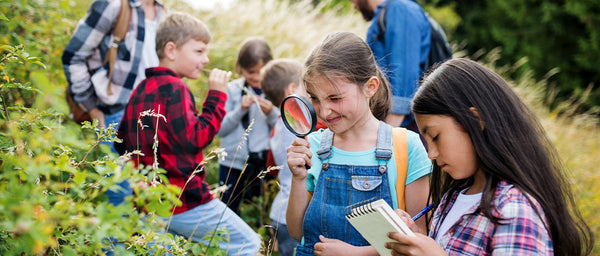
Student Grouping Strategies to Maximize Engagement
If you've ever studied probability, wondered how many different types of pizza you could make with a set number of toppings or pondered the perfect arrangement of books on a shelf, odds are, you’ve calculated some combinations. Let’s see if you can put your skills to the test in this real-world problem:
Question: In a class of 30 students, how many ways can you group them if you want five per group?
Answer: 142,506 possible groups.
In other words, a ridiculous amount of possibilities even before considering the decisions still to come. Do you change groups for every project or keep them the same for an entire semester? Do you vary ability levels or group learners with similar aptitudes? Do you let students create their groups or assign them into carefully selected teams?
It’s a tough cookie, we know — so let’s take a closer look at some of these grouping options and analyze when they would be most effective.
Student Choice (Self-Selection)
The most common method of grouping is student choice. Allowing learners to choose their groups takes very little instructor work. Once you set parameters (how many in a group, necessary roles to fill, etc.), students select teammates on their own and get to work. Usually they choose their friends first, then the classmates who they believe will be “good teammates,” followed by people sitting conveniently close to them.
PROS: According to a study published in the Journal of Management Education, self-selection has a variety of positive effects when compared with random grouping strategies. These include:
- Improved group dynamics.
- Positive individual attitudes toward the group.
- Higher outcome measures (grade or score).
- Less instructor planning required.
- Higher level of group cohesion on average.
CONS: While this can be an effective method, there are some additional negative factors to consider:
- Self-segregation into homogenous groups.
- Less diversity of perspectives and decreased creativity.
- Remainder Problem — Some students get left out in the selection process which leads to feelings of exclusion and a lack of group cohesion.
- Group work time is less focused.
In short, student choice is a great option if you have a reliable group of learners who you trust to work well together. However, keep a close eye on the group dynamics to ensure that students are focused on the task at hand and do not intentionally exclude any of their classmates.
Randomness
Another grouping option that takes relatively little instructor work is a random assignment. Random assignments can be done in many different ways. Consider drawing cards or popsicle sticks with student names written on them or choosing every nth student from a class roster. This method ensures that learners work with people they might not otherwise interact with, and it takes the stress off of students for group selection. If classmates have not previously grouped-up or do not know each other well, this can be a great strategy.
PROS:
- Minimal instructor planning required.
- Encourages group diversity.
- Builds communication skills with classmates that students might not regularly interact with.
- More focused group work time.
- No one is left out in the selection process.
CONS:
- Students may be unsatisfied with selected group and approach projects with a negative attitude.
- Lower group cohesion.
Academic Ability Level
Grouping students based on ability level is a common practice, especially in elementary classrooms. All gifted and talented programs are a modified version of this strategy. Creating groups based on ability level can either be helpful to learners or create perceived unfairness. By separating high achievers and low achievers, an instructor can personalize learning and assign modified projects to each group based on their ability to complete it successfully. However, if students begin to identify as low-ability or low-achievement learners, it can disincentivize them to try harder and may widen the gap separating them from the upper group.
PROS:
- Allows customized pacing based on student needs.
- Content can be repeated or expanded depending on understanding levels.
- Improved depth of student learning.
CONS:
- Perceived unfairness in comparing top academic students to underperformers.
- Widens achievement gaps.
- Requires additional instructor planning.
Interest-Based
If you are assigning a project with multiple possible topics, interest-based grouping can be a great strategy. In this method, students select the subject which they are most interested in researching, which determines their pair or group. To create a framework for learners to choose their favorite option, you can create a list of pre-approved topics or allow students to propose subjects.
PROS:
- Engagement increases when students are interested in the project.
- Passionate learners will create better end products.
CONS:
- Does not work if all students are working on the same assignment.
- Friends may falsify interest to work together.
Cooperative (Role-Based)
In a cooperative group, each member is assigned a specific role or title. This means there is a job that they are responsible for on their team. Assigning specific roles gives students increased ownership over the project and supports group accountability. In "Assigning Individual Roles and its Effect on the Cooperative Learning Setting," Bonnie Coggeshall found that “groups reduced the amount of time students might get off task and increased the amount of participation within the groups.”
PROS:
- Everybody has a role — creates a sense of purpose and belonging.
- Individual ownership and responsibility.
- Builds collaboration and teamwork among all group members.
- Improves group efficiency.
- Models real-world teams.
CONS:
- Potential disagreement based on desired roles.
- “Blame Game” — group can isolate underachieving team member if their assigned role is incomplete or brings down the total score.
- Roles can create inequity in the amount of work required.
What’s the Right Answer?
In short, there is no perfect grouping strategy. Knowing the projects you’ll be assigning and your students’ personalities will be essential to creating successful groups. If you are willing to turn the reins over to your learners, student choice is often the easiest and most successful strategy. But you don’t have to take our word for it! Try out a few different methods and see what works with your learners. Consider mixing and matching, even within one project. Combine randomness, student choice and cooperative grouping by randomly assigning groups, then allowing learners to choose who will perform which role.
STEM Project Ideas Worth Exploring
If you are looking for engaging projects to implement with your learners, look no further than the Discover Series! Discover products allow students to get their hands on today’s technologies, approaching modern topics through hands-on, self-guided exploration. Promoting an atmosphere of creativity and innovation through exciting lessons in robotics, engineering, drones and video production, students explore topics they are actively interested in, all the while developing soft skills including communication, critical thinking and persistence.
Interested in learning more? Download a free Curriculum Sample, peek behind the scenes at PCS Edventures or contact a STEM Program Specialist at (800) 429-3110 or sales@edventures.com for more information.
References:
Catapano, J. (n.d.). 30 Ways to Arrange Students for Group Work. Retrieved from https://www.teachhub.com/30-ways-arrange-students-group-work
Chapman, K. J., Meuter, M., Toy, D., & Wright, L. (2006). Can’t We Pick our Own Groups? The Influence of Group Selection Method on Group Dynamics and Outcomes. Journal of Management Education, 30(4), 557-569. doi:10.1177/1052562905284872
Coggeshall, Bonnie, "Assigning Individual Roles and its Effect on the Cooperative Learning Setting" (2010). Mathematical and Computing Sciences Masters. Paper 99.
Melser, N. A. (1999). Gifted students and cooperative learning:A study of grouping strategies. Roeper Review, 21(4), 315-315. doi:10.1080/02783199909553983
National Education Association. (n.d.). Research Spotlight on Academic Ability Grouping. Retrieved from http://www.nea.org/tools/16899.htm









